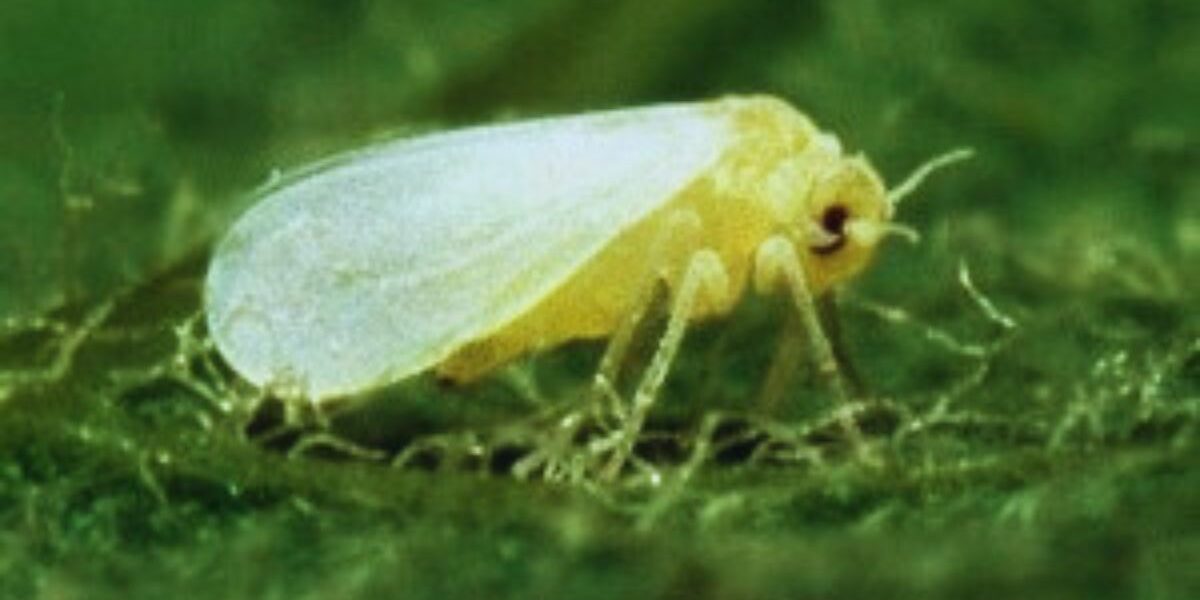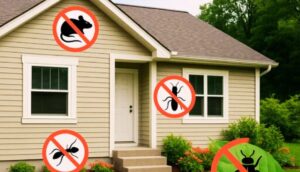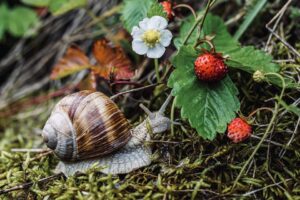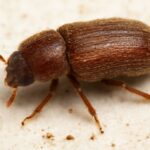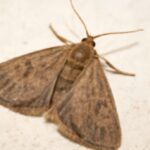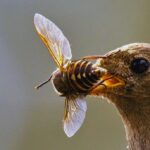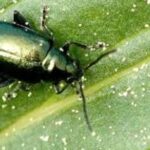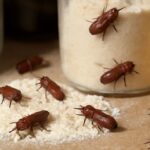Whitefly Insect Control
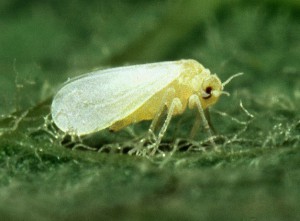
The adult whitefly is 0.19 inches long and has white wings with the surface of the body being yellow. When the whitefly is resting and the wings are against the body look for a triangular overall shape. The nymphs however have a long filament of wax that can be up to 2 inches long.
Whitefly biology
The biology of whiteflies are eggs, nymphs, pupae, and adults. The female whitefly lays 150 or more eggs on the undersides of the leaves of plants. The eggs are laid at a rate of about 25 per day. Within 1o days the eggs hatch and the nymphs begin their journey inserting their beaks or piercing-sucking mouth parts into the tissue of garden plants. The pupa stage is the resting period before the hibiscus whitefly becomes an adult.
The adult insect also sucks or extracts the plant’s juice or fluids, they secret a sticky sugary substance called honeydew that ants use as food. If honeydew is allowed to remain on the plant leaves black dirt-like substance (Sooty Mold) forms on the leaves taking away from the plant’s beauty.
Signs Whiteflies
Look for spirals of white wax that are deposited on the hibiscus by these insects, this happens because of the adult whitefly walking on the leaves. In extreme cases of infestation, the hibiscus whitefly and its waxy deposits can be seen on both the upper and the lower leaf surfaces. The eggs in most cases are laid among the waxy deposits.
How to Control the Hibiscus Whiteflies
There are several ways to control these garden pests, here are a few methods that have proven to be effective.
1. Insecticidal Soap: Insecticidal soap has proven to be effective, before applying insecticidal soap read and follow the manufacturer’s directions for the best results. Insecticidal soaps work on direct contact. Most common soaps are made of the potassium salts of fatty acids, the fatty acids disrupt the structure and permeability of the insect’s cell membranes. The cells are damaged and leak the contents that are found in the cell, when this happens the insect quickly dies.
2. Neem Oil: Neem oil can also be used to eliminate whiteflies and is most effective against immature insects. Neem oil works by covering the insect’s body with oil, this oil blocks their breathing openings which leads to suffocation.
3 Leave Removal: If the infestation is small then the part that’s affected can be removed with a hand pruner.
4. Horticultural Oil: Horticultural oil works as a spray, when applying getting total coverage of the insect pest is so important. When applied horticultural oil forms a coating of oil on the insect’s body blocking the spiracles or breathing openings that lead to suffocation.
5. A Stream of Water: An effective way to eliminate whiteflies is with a strong stream or spray of water. This strong spray of water with the help of a hose attachment nozzle adjusted to jet stream will work. Be careful however because you don’t want to damage plants (leaves and flowers) with the water pressure as it comes out of the nozzle.
6. Soap and Water: Soapy water applied to whiteflies will bring control, however, you may have to apply this solution at 7-day intervals until whiteflies are killed off.
7. Sticky Traps: Coat a yellow index card with petroleum jelly, whiteflies will be attached to the yellow and will get stuck on the card.
8. Predators: Beneficial insects are natural enemies to whiteflies and other garden insect pests. Some examples of beneficial insects are minute pirate bugs, spiders, ladybugs, lacewings, green lacewings, ground beetles, praying mantis, assassin bugs, syrphid flies, etc.… Beneficial insects use the whitefly and other garden insect pests as food.
Other Garden Pests to Keep a watch For
10 Frequently Asked Questions (FAQs)
1. What are whiteflies, and why are they a problem?
Whiteflies are small, moth-like garden insects pest that love to feed on the sap of plants, especially vegetables and ornamentals. They’re not just annoying—they can cause yellowing leaves, stunted growth, and even transmit plant viruses. Plus, they reproduce quickly, making infestations hard to control if left unchecked.
2. How can I tell if I have whiteflies in my garden?
The easiest way is to gently shake a plant—if a cloud of tiny white insects flies up, you’ve likely got whiteflies. You might also notice sticky honeydew on the leaves, a black sooty mold growing on that honeydew, or curling and yellowing of the plant’s leaves.
3. Are whiteflies harmful to humans or pets?
Good news! Whiteflies don’t bite, sting, or transmit diseases to humans or animals. They’re strictly plant pests. But while they’re not dangerous to you or your pets, they are dangerous to your garden.
4. Can I control whiteflies without using harsh chemicals?
Absolutely! There are several natural ways to manage whiteflies. You can spray your plants with insecticidal soap or neem oil, introduce beneficial insects like ladybugs or lacewings, or even use yellow sticky traps to catch adults. These methods are safer for your family and the environment.
5. What’s the best time of day to treat whiteflies?
Early morning or late evening is ideal. That’s when whiteflies are least active, and beneficial insects are less likely to be affected by treatments like neem oil. Plus, applying sprays during cooler times helps prevent leaf burn.
6. How do yellow sticky traps work for whiteflies?
Whiteflies are naturally attracted to the color yellow. Sticky traps use this against them by luring them in and trapping them on a sticky surface. They’re great for monitoring and reducing adult whitefly populations, especially in greenhouses or container gardens.
7. What plants do whiteflies like the most?
Whiteflies are especially fond of tomatoes, peppers, eggplants, cucumbers, squash, and ornamental plants like hibiscus and poinsettias. If you’re growing any of these, keep a close eye out for signs of infestation.
8. Can companion planting help deter whiteflies?
Yes! Certain plants like marigolds, basil, and nasturtiums can help repel whiteflies naturally. Planting these alongside your vegetables or flowers can offer some protection and add beauty to your garden at the same time.
9. Will heavy rainfall or watering wash away whiteflies?
A strong spray of water can dislodge whiteflies from leaves, especially during the early stages of infestation. While it won’t eliminate them entirely, it can knock down their numbers and reduce damage. Be careful not to damage delicate plants while doing it!
10. What should I do if my whitefly problem gets out of control?
If the infestation is severe, you might need to combine several methods: pruning heavily infested areas, applying neem oil or horticultural oils weekly, and introducing beneficial predators. In extreme cases, you may need to remove and destroy heavily infested plants to protect the rest of your garden.
Conclusion
With so many effective methods at your fingertips whitefly does not stand a chance, applying one or more of these methods will give you the results you are looking for. Or contact us so we can help you to control these garden pests. Your garden plants will thank you for it by rewarding you with an abundance of flower blooms if you’re growing an edible garden. Join the many homeowners who are having much success in their garden with these control methods.

